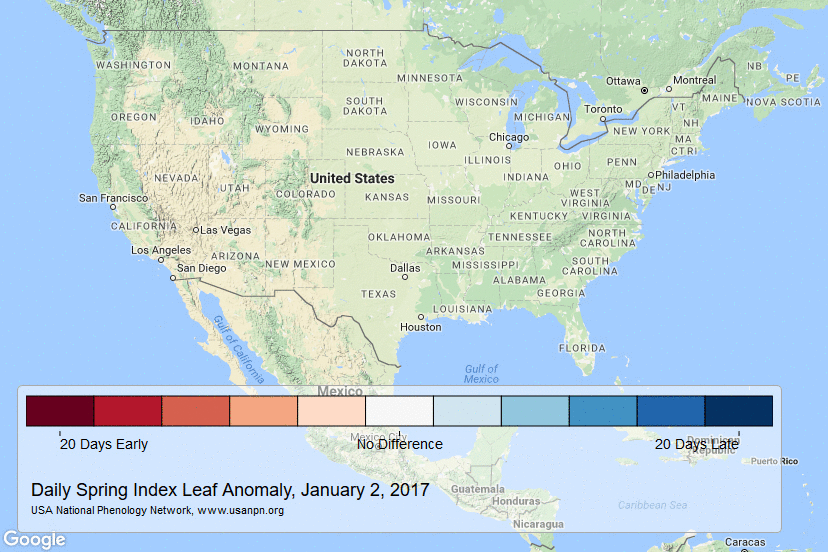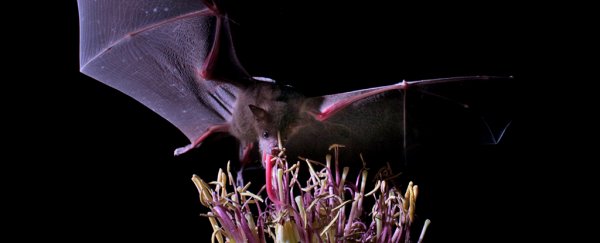The climate breakdown we're experiencing is clearly already having a massive impact on the life around us.
Last summer in Australia, we watched in horror as bats dropped to their deaths during a heatwave and we've witnessed more and more green sea turtles being born female due to increased temperatures on the beaches where they lay their eggs.
These types of events are being repeated all around the world.
But direct impacts like these are far from the only problems caused by the changing rainfall patterns, record breaking temperatures and increases in extreme weather events of climate change.
As everything on our living planet is interconnected, the way we've wrenched at the anchoring line of climate is causing massive disruptions to all the precariously balanced cycles they're linked to - such as the timing of life cycles, food webs, and even human health.
"Increasing temperatures cause plants to bloom earlier than before and become out of sync with the insects and birds in a food web," science educator, Regina Brinker explains in a Ted-Ed video.
The study of these life cycle interactions and how physical forces, such as weather, influence their timing, is called phenology.
Rearranging the web of life
Phenologists have observed plants reacting like spring's arriving early, due to this increased heat, by putting out new leaves and blossoming before usual, in many places around the world.
Here's what that looked like in southern USA last year:

"[Early flowering] also means the presence of pollen in the air. What was once thought of as the "pollen season" is also changing as the climate changes." ecosystem scientist Marie Keatley and colleagues wrote for The Conversation.
"For many people, airborne pollen is a source of suffering – for asthma sufferers who are allergic to pollen, and for those with hay fever, pollen can mean sneezing and wheezing."
Or, perhaps, even more fatal instances of thunderstorm asthma, like Melbourne saw in 2016, as climate change also increases the frequency of storms that create this condition, as well as lengthening pollen seasons.
Unraveling the web of life
These altered plant habits don't just affect humans, either.
Take pied flycatchers, for example. While the birds are migrating as normal from Africa to the Netherlands to breed, by the time they've reached their destination, the main food that they feed their young, winter moth caterpillars, have already had their fill of the earlier spouting oak leaves and moved on.
Flycatcher populations have declined by 90 percent in some areas as a result.
Australia's critically endangered mountain pygmy possums are emerging from hibernation earlier due to earlier snowmelt. But their main food source, bogong moths, are still migrating to the mountains later, at the traditional time, leaving the possums starving.
In Greenland, Caribou are also failing to migrate on time to take advantage of their usual food supply, with arctic plants putting out spring growth up to 26 days earlier than they did 10 years ago.
Given enough time, the Caribou might be able to adjust their migration, but as the arctic warming is happening so quickly "the question is whether things are changing too fast for evolution to matter," ecologist Eric Post from the University of California told The New York Times.
This phenomenon of life cycles falling out of sync with each other is known as phase effects or phenological mismatch and can lead to problems like disruption of crop and wild pollination, changes in animal migration patterns, outbreaks of pest species and disease carriers, like mosquitoes, or species starvation and extinction.
In 2007 a large study in Ecology Letters, of 1,430 pollinators and the 429 plants they interacted with, showed that phonological shifts these plants has already drastically reduced food availability for up to 50 percent of pollinators - causing grave concerns for the future existence of both the plants and insects.
"Over 30 years ago Janzen (1974) raised the spectre of the most insidious sort of extinction, the extinction of ecological interactions," biologist Jane Memmott and her colleagues wrote in their paper.
They concluded these shifts in life cycles "may lead to the large-scale extinction of interactions which are responsible for a key ecosystem service, that of the pollination of plants."
Scientists are working hard to figure out how to manage phenological changes for our crops, from barley to wine grapes.
They've identified future growing regions, like the cooler climate of Tasmania for wines, or different strains of the same plants that react to the change in climate in ways that allow them to stay in sync with the animals (including people) they rely on.
Other phenology projects, such as Redmap, have detected Australian marine species, like the gloomy octopus and tropical fish, moving south towards Tasmania's cooler waters.
But the impact of these migrations is unknown, including how they will affect our fishery industries.
What can we do about it?
The scale and speed of these changes is alarming and overwhelming, but they clearly demonstrate why it's vital we all try to do what we can to put the brakes on fossil fuel emissions.
We can also help scientists understand these changes by joining citizen science projects, like Redmap and ClimateWatch in Australia, the National Phenology Network in the USA, Nature's Calendar in the UK and others listed here.
"Understanding the timing of phenological processes enables us to optimize when to harvest crops, when to manage for invasive species and [assess] the vulnerability of species to help prioritise where we should place our limited resources for management and conservation." Nadiah Roslan, Program Manager of ClimateWatch, told us at Science As Fact.
Helping us all prepare for the changes ahead can be as simple as going for a walk outside and recording what life you see.
Science AF is ScienceAlert's new editorial section where we explore society's most complex problems using science, sanity and humor.
